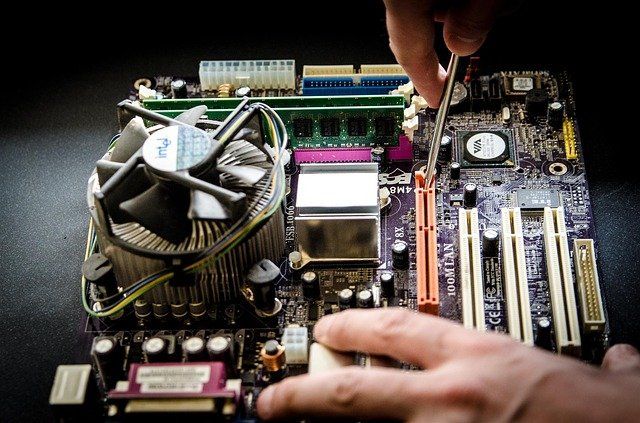Dare to repair!
There is a definite mindset when it comes to DIY and loving to fix stuff. Here's my theory and some examples on how to pull off an appliance or device repair.

Develop and cultivate a fix-it-myself attitude
There is a definite mindset when it comes to DIY. Thinking about what motivates me, I come up with the following components:
- An enduring curiosity about how something works and what it looks like "under the hood."
- Confidence that I can fix anything short of board-level circuit repair, although if I had the tools and training, I'd give it a go!
- Not concerned that I will break it. Hey, if it's already on the fritz, I can't make it any worse.
- Challenge myself.
As I have written elsewhere, I know my limits and there are things I won't attempt. Major electrical wiring, complex plumbing, brain surgery and cold fusion are a few examples.
How do you develop the same attitude?
I cannot recall a specific time or event that got me going on DIY. I always puttered around my Dad's workshop and liked taking stuff apart. There were some specific events when I was a teenager that I recall where I tackled a project beyond my experience.
1. Working in my Dad's Esso, later Exxon service station, one of the mechanics came in and said the carburetor he was working on needed replacing. I asked if I could take a shot at it. I took it apart, poked around a bit, cleaned it and reassembled it. Lo and behold, it worked! And, I had parts left over. This last bit isn't always a good sign, but in this situation, it did not seem to matter.
2. I was at a high school party and the stereo wouldn't work. So, I asked if I could take a look at it, promising not to break anything. I took the back off and worked with the "innards" by wiggling them and checking connections. Upon reassembly, it worked!

The moral here is to have the interest and confidence to take a stab at it. So, the next time a small appliance acts up or stops working, see what you can do.
Document your steps

Okay, you have your project victim, let's say a blender. Here's how to proceed.
- Work in a clear space where you can put your parts without knocking off and losing them.
- Look at how the base is put together - almost always screws, sometimes with exotic heads. Get the correct tools to open the case.
- Remove the "back" and place it to the side with the screws on it. You might consider taping them down with masking tape if pets or kids might scatter them to the winds.
- Looking at the innards, that's the scientific term for the components making up the device, identify which part comes off next. Take a picture of how it is placed and positioned. Remove it and like the back, put it and its screws to the side.
Note: Why take pictures? The main reason is to help you reassemble the device correctly. Having a photographic record is a huge aid. Even if it is a dead-simple removal, take the picture anyway to develop the habit.
- Proceed to disassemble other parts until you find a problem or have everything removed. You're documenting each step, right? Good, I thought so.
What are you looking for? What do you hope to accomplish?
You are looking for wear, damage, loose connections and the like. For example, there might be damaged gear. You might see an electronic component that shows signs of being burned. There are fuses that can blow and once replaced, all is good again. You might find a loose electrical connection. The inside could be full of dust causing issues.
What do when you find a damaged part? If you still have the owner's manual, look through it for an exploded parts diagram at the back. If that documentation is gone, grab the model number and head online to look for an exploded parts diagram there. You should search for it like this, including the model number:

What's an exploded parts diagram? It is a 3D line drawing with all the parts and pieces shown individually as if the device exploded. Each will have a number you can use to get a replacement part.
- Order the part and reassemble. Check for proper operation and away you go!
Tip: Be sure to keep the various parts and pieces organized and protected from mayhem so reassembly is a breeze.
Hey, I didn't find anything!
No problemo if your dissection doesn't reveal a cause of failure "smoking gun." Say, that's phrase is not going to trigger anyone is it? Pun intended. Now, where were we? Oh, yeah. That will happen and when it does, reassemble the device. Clean dirty and dusty parts, double-check all electrical connections and repower the device.
Chances are pretty good it will work. I cannot explain why this happens, but it does regularly. I've also noticed that it only works once. Again, no idea why that happens either.
Note: Damaged circuit boards can be identified by blackened components and blown onboard fuses soldered in place. These types of items aren't easy to replace meaning a new board is in order. Check the exploded parts diagram for availability and breathe new life into your device!
Feel free to experiment and develop your own process for fixing stuff.
Try your hand at it today
You can't imagine the fun and satisfaction of either fixing something or learning about all its parts. Give it a shot ASAP!
